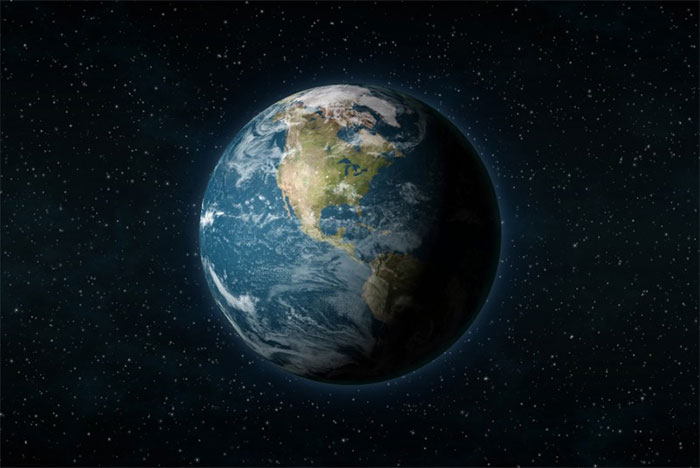Climate change and global warming are literally changing the colors of water on Earth.
The Earth is also beautifully referred to as the “blue planet.” This name is due to the fact that water (primarily oceans) covers about 70% of the Earth’s surface. In the past, when urbanization was not as rapid, green forests also occupied a significant portion of the continents.
However, everything is gradually changing. According to scientists, future generations may never see polar bears and may also never witness blue lakes again.
A new study from researchers at the American Geophysical Union (AGU) concludes that if global warming continues as it is, lakes around the world will change color from blue to green and brown. This change in water color is a sign of declining ecosystem health.

From space, Earth is a beautiful blue sphere.
Lakes change color for many reasons, such as the growth of algae or sediment flow. However, the new study also indicates that other factors such as air temperature, rainfall frequency, depth, and elevation of the lakes also affect water color.
One third of the world’s lakes are blue. They are typically found in cooler, high-latitude regions where there is often rain and snow. The remaining lakes are brown, light green, comprising 69% of the total number of lakes and are located along coastlines and other arid regions.
The authors of the study at AGU utilized 5.14 million satellite images from 85,360 different lakes worldwide, taken from 2013 to 2020, to derive their findings.
Previous studies focused on 200 lakes globally, but this research is much larger in terms of both the number of lakes and the coverage of these lakes.
If temperatures continue to rise, the water colors of the lakes will continue to change. The most notable blue lakes found in the Rocky Mountains (North America), northeastern Canada, Northern Europe, and New Zealand will experience warmer water, leading to more algal blooms, which will likely shift the lakes to green and brown.
Changes in water color in lakes have significant implications for humans. Lakes or other water bodies turning green may reduce water quality. Each country will incur higher costs to filter the water and restore it to its former state.
Additionally, if water ceases to be a habitat for fish and other aquatic species, the ecosystem of the lake and its surroundings could change dramatically. This will not only impact the economy but also tourism and the culture of lakeside residents.
Not only is there a change in color in freshwater lakes, but even the oceans will experience changes in water color.
Researchers have used computer models to simulate how temperature, ocean currents, and ocean acidity will affect the growth of different types of phytoplankton, as well as how they absorb and reflect light.
The results indicate that more than half of the world’s oceans will turn dark blue if sea surface temperatures continue to rise by 3 degrees Celsius by 2100.
When water appears dark blue, it indicates a high abundance of phytoplankton growing near the surface. Warmer temperatures lead to a surge in phytoplankton and algal species.
Phytoplankton is a crucial link in the underwater food web, providing food for many species. Different types of phytoplankton absorb light differently, and if climate change shifts one phytoplankton community to another, it will also alter the food web, affecting the ecological environment in that area.
Small algae species are also vital in absorbing carbon dioxide, which contributes to climate change. Without them, there would be no life in the oceans. If they change color or disappear, a significant amount of carbon could escape from the oceans back into the atmosphere, creating even more environmental issues that we are currently facing.

















































